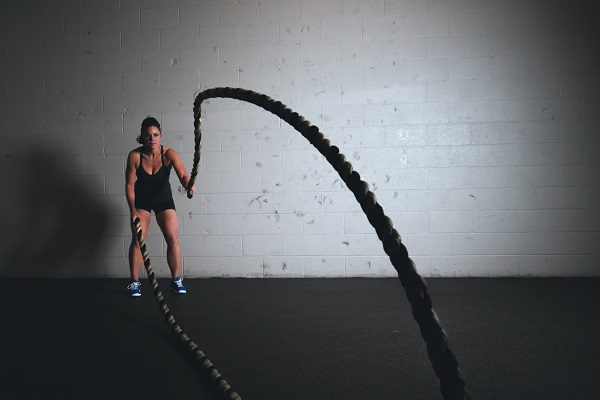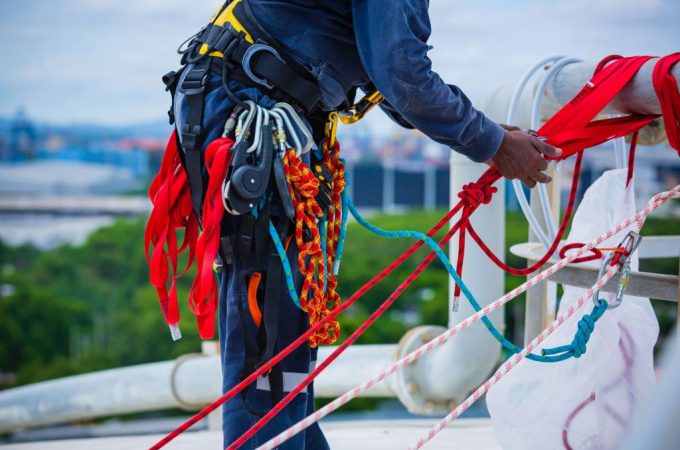
Jump Rope Exercises: Are They Bad For Your Joints?
Are jump rope exercises really bad for your joints? It’s a question many people have been asking and one that may not have an easy answer. Often asked by older adults and children, this is not an easy question to answer. Jumping rope requires more than just a single joint in your foot–a range of muscles must be involved to control the speed and direction of the rope. The article explains what it takes to avoid damaging your joints during jump rope exercises.
Contents at a Glance
ToggleWhat is jump rope?
Jump rope is a simple exercise that can be done anywhere, anytime. It is an excellent way to burn calories, increase agility and coordination, and improve your overall fitness. However, jump rope exercises are not without risks. Here we discuss the potential dangers of jumping rope for your joints.
While jump roping does have some minor joint-strengthening benefits, the most significant risks come from overuse or misuse of the joints involved in the exercise. Jumping too high or too often can overload your knees and hips, leading to pain and inflammation. Additionally, jumping on hard surfaces (such as concrete) can cause tears in these tissues and fractures. Finally, jumping with poor form (e.g., crossing your ankles) can cause stress fractures in your ankles and other bones in your foot.
If you choose to jump rope, follow the guidelines provided by your gym or health professional. And if you experience any pain or discomfort while jumping rope, please stop immediately and see a doctor.
Is jump rope bad for your joints?
Jump rope is a great exercise for your joints, but it’s not without its risks. Jumping rope can put a lot of stress on your knees and other joints and can cause them to wear down faster. If you’re already experiencing joint pain, jump rope may not be the best exercise for you. If you’re still interested in trying it, be sure to do it slowly and cautiously and always consult with a doctor before starting any new exercise program.
Here are five major reasons why jump roping might not be the best exercise for your joints:
1. Jumping repeatedly puts pressure on the knee joint. When you jump rope, your feet come down quickly and forcefully against the ground, which can cause damage to the cartilage in your knee. Over time, this constant stress can wear down the cartilage and cause instability in your knee joint.
2. Jumping rope can also cause inflammation in your ankle and foot joints. The repetitive movement of your feet against the ground can cause irritation and swelling in these areas, leading to arthritis in the future.
3. Jumping rope can also cause neck pain. While it’s not entirely clear why this happens, the jumping rope aggravates neck strain, which may result in pain or stiffness in the neck muscles.
4. Jumping rope can also cause problems with your spine. The repetitive movement of your ankles or feet across the floor can cause damage to your spine and joints, resulting in back pain or stiffness.
5. Jumping rope can increase your risk of a major knee injury. With all of the bouncing and jumping you’re doing when you jump rope, it’s not surprising that this activity is one of the most common causes of knee injuries. The repetitive movement can cause much wear on your knees and hips, which increases the likelihood of injury in the future.
Benefits of Jump Ropes
Jump ropes, also known as skipping ropes, are a great way to add exercise to your day, and they can also be a fun activity for the whole family. Jump rope exercises can be done practically anywhere – in the living room, in the backyard, or even while you’re commuting on your way to work.
There are many different types of jump rope exercises, but all of them work your core muscles, your arms and your legs. Here are some of the benefits of jump rope exercises:
-Boosts heart rate and endurance.
-Gives you toned arms and legs.
-Improves coordination and balance.
-Encourages healthy breathing habits.
-Can help relieve stress and anxiety.
Disadvantages of Jump Ropes
Jump rope exercises are a popular way to stay in shape, but they have some risks. Jumping ropes can cause microtrauma to the joints in your feet, ankles, and hips. This can lead to inflammation and pain, and may eventually require surgery. Additionally, jumping too often can also wear out your knees over time.
Here are three reasons why jumping rope is bad for your joints:
1. Jumping rope can cause inflammation and pain in the feet and ankles. The repetitive motion of jumping rope can cause micro-tears in the tissues surrounding the ankle and foot bones. These tears make it difficult for the ankle and foot to move properly, leading to chronic pain and inflammation.
2. Jumping rope can also lead to knee injuries. Most jumps in a jump rope use the same height, which puts a lot of stress on the knees. Over time, this stress can wear down the cartilage in your knee joint, causing it to degenerate or even fracture. In severe cases, jumping rope may even require surgery to fix the damage.
3. Jumping rope can also cause hip problems. The same muscles that help you jump high also help you rotate your body laterally (side to side). When these muscles are stretched out too much, you may end up with hip pain and injury.
How should you use a jump rope?
Jump rope exercises can be a great way to get your heart rate up and work your muscles. However, jumping rope shouldn’t be done excessively or for extended periods of time, as it can strain your joints. Here are a few tips to help you use a jump rope safely:
-Start with a short rope and work your way up to a longer one.
-Use a moderately fast pace when jumping rope, and keep your arms and legs moving evenly.
-Don’t overdo it by leaping too high or too often. Aim for 10 to 12 jumps per minute.
-Take breaks regularly if you’re feeling particularly active or if your joints start to hurt.
Exercises that can be done with a Jump Rope
Jump rope exercises can be done with various speeds and rhythms, so they are perfect for all levels of exercisers. They can also be modified to fit your own personal fitness level by adding or subtracting repetitions.
The American Council on Exercise (ACE) recommends that jump rope exercises be performed at least twice weekly, offering multiple benefits such as improved balance, coordination, agility, and strength. Jump rope exercises help improve bone density and muscle strength by increasing the efficiency of your heart and lungs.
One common complaint about jump rope exercises is that they can cause joint pain. However, the ACE recommends only adding these exercises to your routine if you can do them safely and properly. If you experience any joint pain while jumping rope, stop immediately and consult a medical professional.
Conclusion
Jump rope exercises are an incredibly popular cardio form used by people of all ages and fitness levels. However, like any other exercise, the jumping rope should only be done if it is safe for your joints. If you find that your joints become sore after jumping rope exercises, you may want to adjust the intensity or duration of the workouts until they no longer cause pain.






